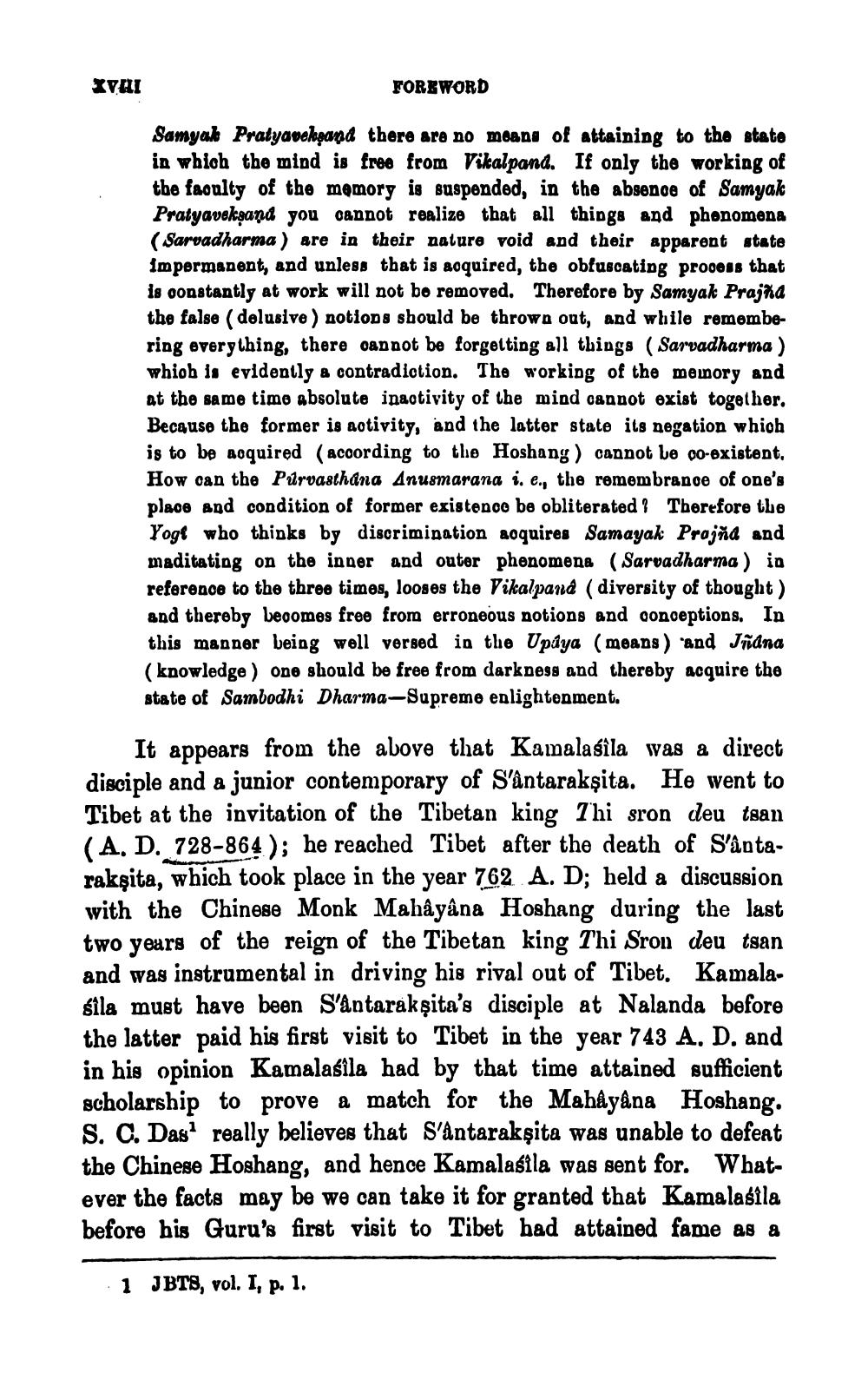________________
IVAI
FOREWORD
Samyal Pratyavelpand there are no means of attaining to the state in which the mind is free from Vikalpand. If only the working of the faoulty of the memory is suspended, in the absence of Samyak Pratyaveksand you cannot realize that all things and phenomena (Sarvadharma ) are in their nature void and their apparent state im permanent, and unless that is acquired, the obfuscating process that is constantly at work will not be removed. Therefore by Samyak Prajna the false (delusive ) notions should be thrown out, and while remembering everything, there oannot be forgetting all things (Sarvadharma ) whiob is evidently a contradiction. The working of the memory and at the same time absolute inactivity of the mind cannot exist together. Because the former is activity, and the latter state its negation which is to be aoquired (according to the Hoshang ) cannot be co-existent, How can the Purvasthana Anusmarana i. e., the remembrance of one's place and condition of former existence be obliterated? Therefore the
Yogę who thinks by discrimination aoquires Samayak Prajña and maditating on the inner and outer phenomena (Sarvadharma ) in reference to the three times, looses the Vikalpana (diversity of thought) and thereby becomes free from erroneous notions and conceptions. In this manner being well versed in the Upaya (means ) and Jndna (knowledge) one should be free from darkness and thereby acquire the state of Sambodhi Dharma-Supreme enlightenment.
It appears from the above that Kamalasila was a direct disciple and a junior contemporary of S'ântarakṣita. He went to Tibet at the invitation of the Tibetan king Thi sron deu tsan (A. D. 728-864); he reached Tibet after the death of S'ântarakṣita, which took place in the year 762 A. D; held a discussion with the Chinese Monk Mahâyâna Hoshang during the last two years of the reign of the Tibetan king Thi Srou deu tsan and was instrumental in driving his rival out of Tibet. Kamalasila must have been S'Antarakṣita's disciple at Nalanda before the latter paid his first visit to Tibet in the year 743 A. D. and in his opinion Kamalasila had by that time attained sufficient scholarship to prove a match for the Mahayana Hoshang. S. C. Das really believes that S'antarakṣita was unable to defeat the Chinese Hoshang, and hence Kamalasila was sent for. Whatever the facts may be we can take it for granted that Kamalasila before his Guru's first visit to Tibet had attained fame as a
1 JBT8, vol. I, p. 1.




